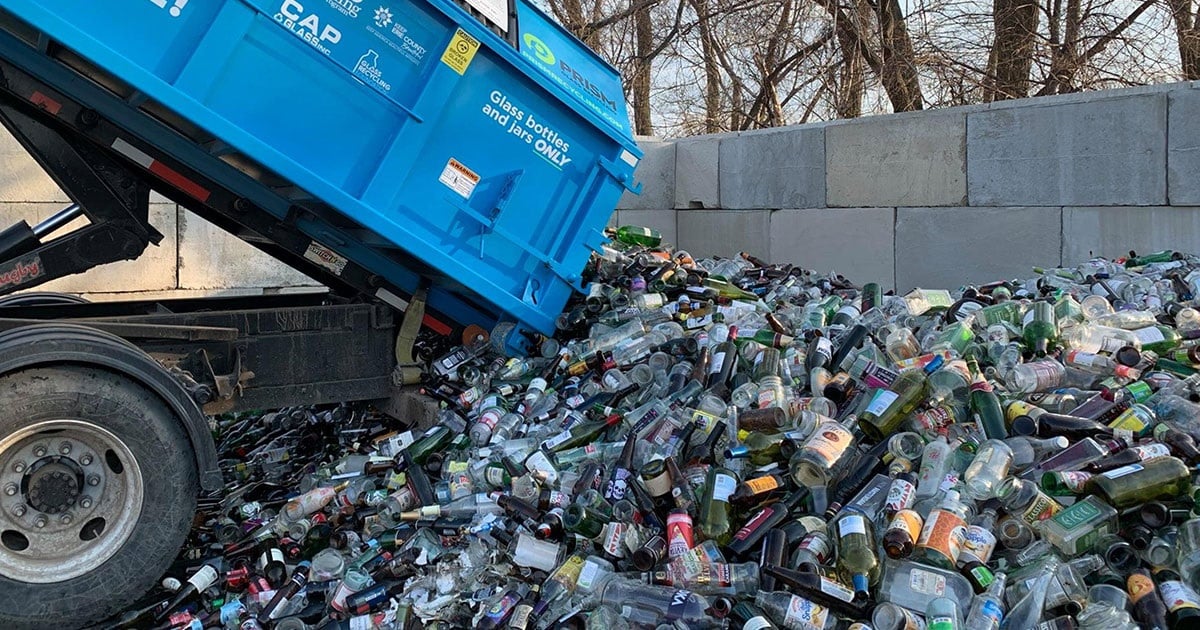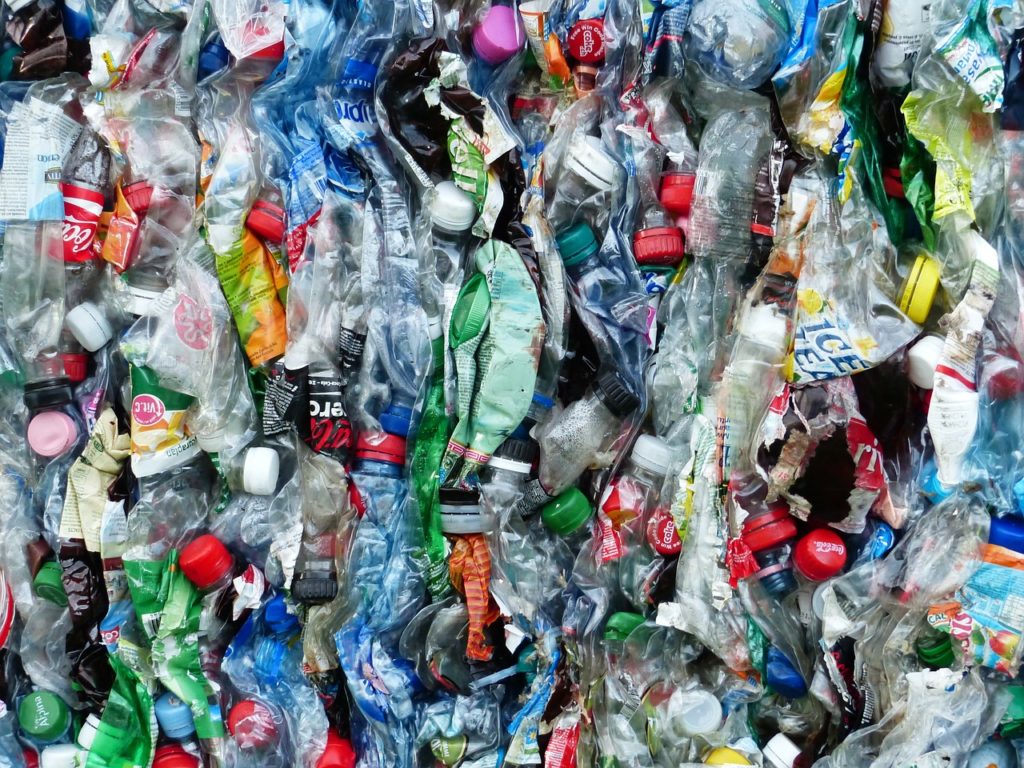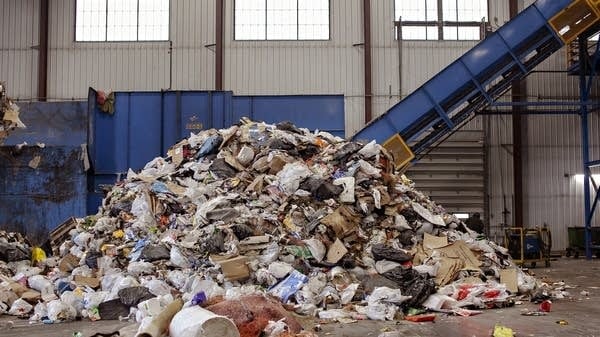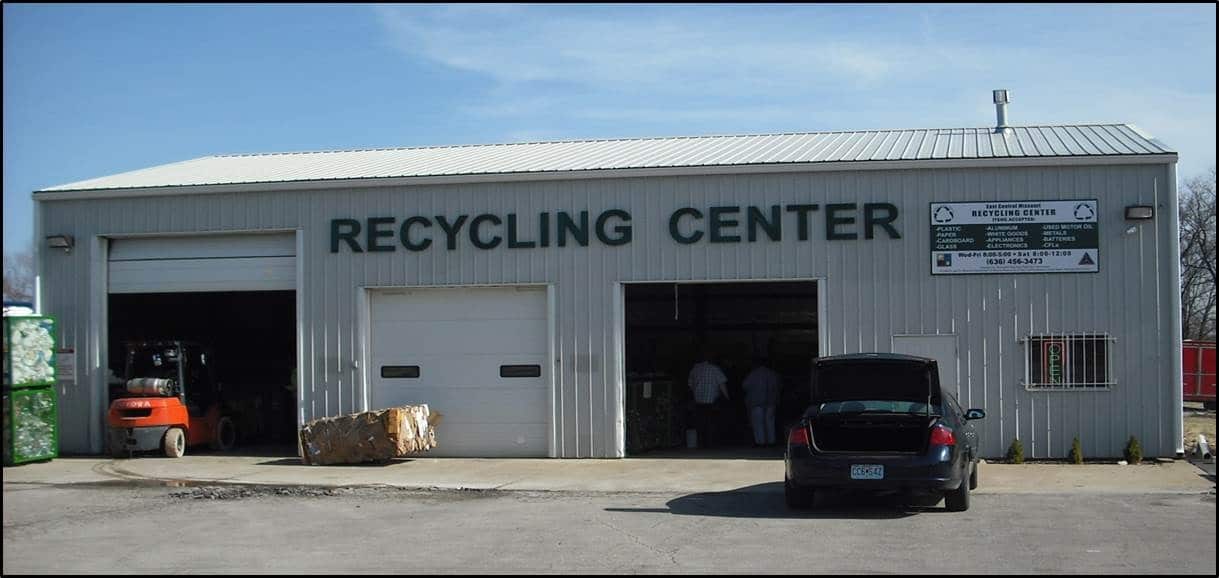Recycling centers are large facilities where used items go to be repurposed. They perform different recycling procedures on items deemed to be reusable such as cardboard, plastic, glass, batteries, metal, etc. In this article, I will help you find your local recycling facility and give you some insight into how the recycling center near me works.
Find A Recycling Center Near Me
For “Recycling Center Near Me” or “Recycling Plants Near Me”, see the map below…
It’s important to note that the above map does not include recycling yards, which are different from plants or centers. I will go into the difference between a recycling yard near me and a recycling center near me. But first…
Operations of the Recycling Center Near Me
These materials recovery facilities, receive recyclable items via curbside haul-away, drop-off centers, buy-back centers, deposit refund programs, and from local drop-off. They take the items and separate them into categories. Each category of item has specific handling procedures that need to be performed to meet regulations. Many recycling centers are managed by your county government and follow state mandates, while others are privatized.
There are two types of recycling plants: single-stream and dual-stream.
Single Stream Facility
Single-stream facilities take recyclable items mix everything together on a conveyor belt and sort it with machines. The machines don’t do a great job of separating the material despite recent technological improvements.
It’s hard for the machine to decide what is recyclable and what is not. When non-recyclables get co-mingled (called cross-contamination) with recyclables everything gets deemed non-recyclable and is sent to a local landfill. An example of when this happens is when glass breaks and is mixed with paper. If glass was to get caught in the paper recycling process it would break the machine.
While it is easier to manage the facility that way, it produces less reusable material because of cross-contamination. Single stream is proven to be less cost-effective, however many local municipalities use this approach. It’s popular among private recycling plants because they don’t have to publish how much waste they are able to re-purpose.
Dual Stream Facility
Dual stream, on the other hand, is when fibrous items like cardboard are separated from cans, glass, and plastic. This approach allows for the maximum amount of re-usability. At these recycling centers items are separated by hand and categorized to be put in the correct process stream.
Dual stream is bar the most cost-effective way to recover recyclables, but it is also the more labor-intensive approach.
How Do Recycling Plants Work
How Do Recyclables Get to Recycling Plants
The four most common methods of material gathering are curbside pickup, drop-off centers, buy-back centers, and refund programs.
Curbside Pickup
For curbside, special trucks with compartments pick up the various types of recyclables at residences. Neighborhoods leave separated recyclables on the edge of their property. These trucks are like garbage trucks, but more specialized. The workers do some basic sorting while they are collecting.
There are also separate curbside pickup programs for yard waste recycling like leaves and grass clippings. These services are done by private companies who collect a service fee from your condo or HOA.
Drop Off Centers
This is a centralized location where they can take recyclables from homeowners. This is particularly popular for hazardous material like propane tanks, batteries, or paint. Certain items will require a collection fee. Fees are commonly associated with used batteries and recycling old tires.
Even if your community offers curbside pickup there may be certain items that you need to take to a special drop center. Some also take regular household recycling and textiles as well.
Buy Back Yards
At these locations, which are normally large outdoor lots, you can sell your items to them for market value. These are retail businesses like auto salvage yards, home salvage yards, recycling yards, and scrap metal centers. If you are selling a car to them it will be based on weight to determine the price. Sometimes they get items from residential and commercial junk removal companies.

Deposit Refund Programs
These programs are where you return used beverage cans in exchange for 5 cents or 10 cents depending on where you live in the US. You place your used can in a machine, and it crushes it and gives you a refund. Once the machine is full the bag of crushed cans goes to a recycling plant.
Additionally, some local landfills don’t have their own recycling facilities and they separate out specific recyclables and deliver them to an appropriate facility.
How to Identify The Type of Recycling Center Near Me
When you look at the map at the top of this post you can often tell if it is privatized or county owned by the name. There are several recycling plants near me and it’s a mix of both government and privately owned facilities.
A look at the website for each facility often will give you some ideas on whether it’s a dual stream or single stream. In my observation the less information they tell you about the process the more likely it is to be private and single-stream. County owned facilities are much more transparent as taxpayers want to know there money is being spent. You will also often see state or county information displayed on the website.

What Type Of Materials Do Recycling Facilities Accept
To find out what materials the facility takes, check their website. It’s easier for them to be upfront about what they can process as it stops people from dropping off items that they can’t process.
If your local recycling plant doesn’t take what you are trying to get rid of, just search for where to recycle [your item]. Stores like Best Buy take batteries, computers, and electronics and Home Depot takes paint and propane. For items like televisions, you may be able to try your local thrift shop or salvation army.
For large items like junking a car or truck, you may will need to find a junk car buyer or auto salvage. These operate very differently from a waste management perspective. These are more geared toward the vehicle recycling industry.
Discovering the Recycling Center: A Closer Look at Item-Wise Recycling
Exploring the Recycling Center can be a fascinating experience, as it allows individuals to learn about the various materials that can be recycled item-wise. Plastic bags are often collected at these centers, and it’s essential to ensure they are clean and free from any food residue. Retail stores frequently drop off their excess cardboard boxes, contributing to the recycling efforts. Glass bottles are a popular item for recycling, as they can be melted down and reused, conserving valuable resources. Learning how to save space in your recycling bin is another valuable lesson – by breaking down cardboard boxes or crushing plastic bottles, you can maximize the capacity.
For those with large quantities of recyclables, commercial vehicles can be used to transport these items to the recycling center efficiently. Pizza boxes, often coated with grease, can still be recycled as long as the clean parts are separated from the soiled ones. Plastic hangers are a common item found in recycling centers, and they can be repurposed or melted down to make new items. Rigid plastics, such as containers and toys, are important to recycle to reduce the environmental impact of plastic waste. Plastic film, commonly used in packaging, can also be brought to the drop-off location, and the recycling center will ensure it’s processed properly.
In addition to traditional recyclables, many centers also accept common electronics and old electronics, providing a convenient and eco-friendly way to dispose of these items responsibly. Exploring recycling centers can be an eye-opening experience, revealing the wide array of materials that can be given a new life through the recycling process.

Is the Recycling Yard Near Me a Recycling Center?
When the “yard” is associated it means junk yard, scrap yard, or salvage. These recycling yards are drop-off centers for big items (normally metal), like cars, trucks, RV’s, boats, or even home salvage. They are called recycling yards because they resell parts to the public from a large lot called a yard.
At a yard for example you can sell a junk car and then they sell the working parts of it back to the public. Once the vehicle has its parts sold, the rest gets sold for scrap metal.
A recycling center is where your common household recyclables go after you throw them out. Some people use there terms yard and center interchangeably, but the recycling center near me is very different in functionality than the recycling yards near me. What we are discussing here such as single-stream and dual-stream facilities that separate waste are recycling centers.
Recycling Center Near Me Conclusion
The more you can do upfront like separating your items the easier you will make it on downstream processing. Most recycling centers report that asking people to separate reduces program participation. These programs are a crucial part of our sustainability and it’s important we find ways to reuse and repurpose items back into the product stream.
Finding a recycling center near you is important especially if you don’t have a regular curbside pickup. Knowing how to separate your waste before it gets to the plant makes processing more efficient and may save you on local disposal fees. I hope you found this article helpful in finding your local recycling plant and understanding a bit about how it works. I’m sure many have their own unique procedures, but what I have shared is how the recycling center near me operates.
Frequently Asked Questions
What Materials Should Be Recycled?
Recyclable materials include various kinds of glass, metal, plastic, tires, cardboard, paper, batteries, electronics, and textiles. Composting is also a form of recycling which makes reuse of biodegradable waste like garden and food waste.
What Should and Should Not Be Recycled?
Not all items are recyclable even if they are made of recycled materials. Plastics like grocery bags, closet hangers, and toys are not allowed in curbside bins in certain counties. Other non-recyclables include bubble wrap, Styrofoam, dishes, and chords for electronics.
How Many Aluminum Cans Do You Need to Make $100?
It takes about 2000 cans to make $100. The amount of cans will vary based on the particular recycling center you go to and the going rate for aluminum on that day. The average going rate is about $.05/can so it would take 2000 cans to make $100.
Where Can I Make The Most Money for Recycling?
Scrap metal is where you can make the most of recyclables. In the scrap world copper is king. This metal pays between $2 and $4/pound depending on the daily market conditions. You can find copper to recycle in wiring, tubing, and scrap.

